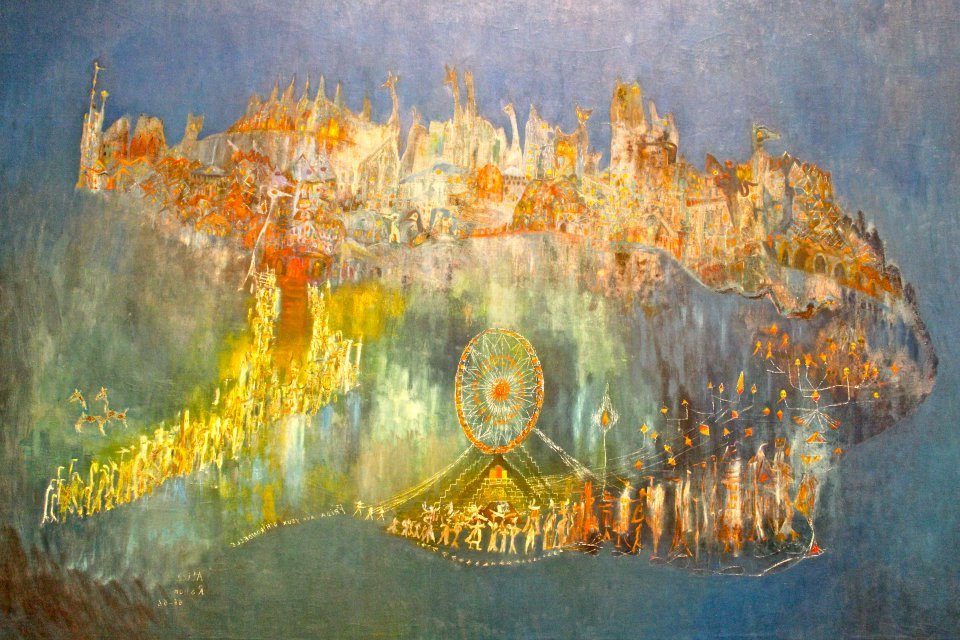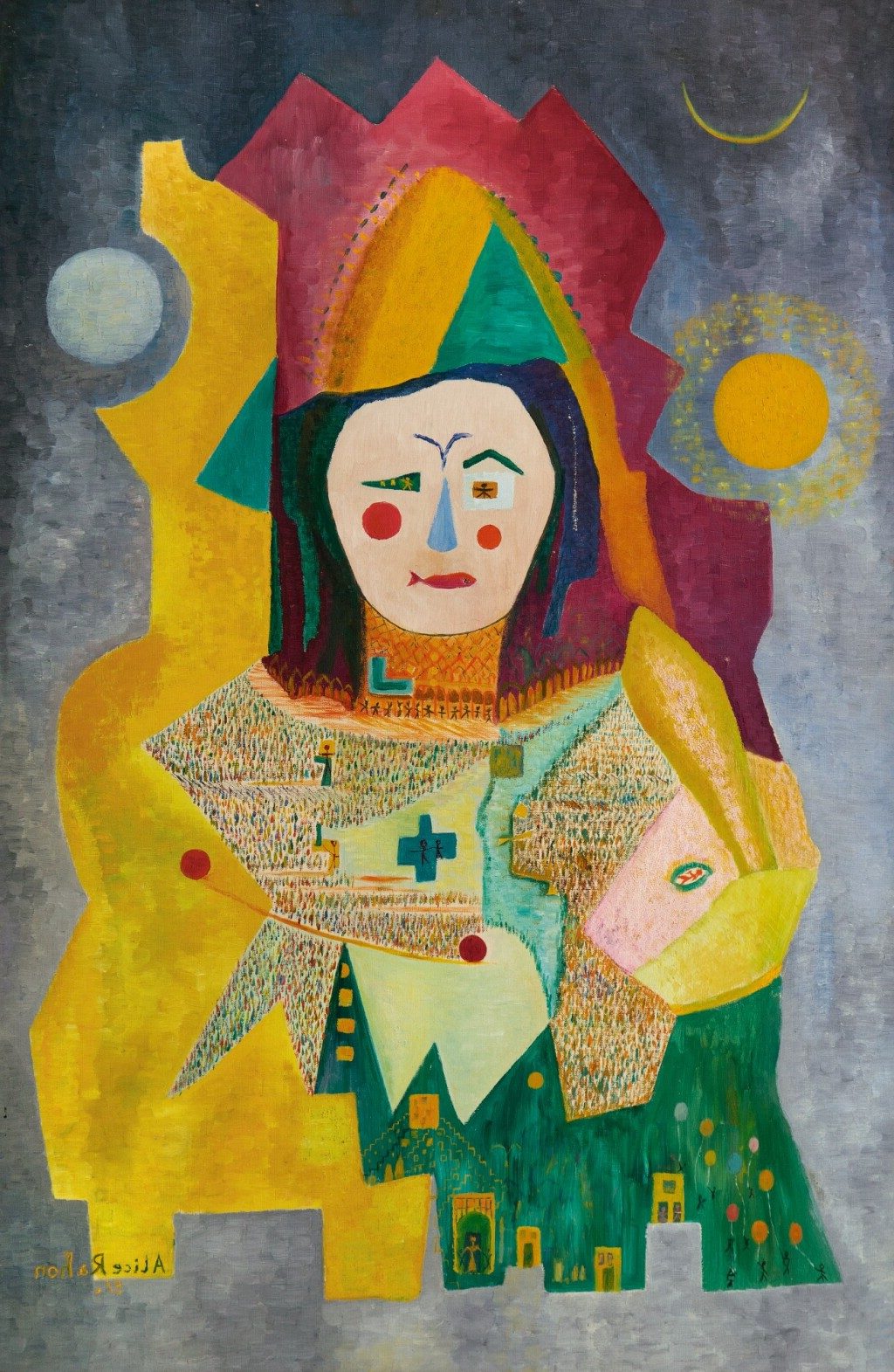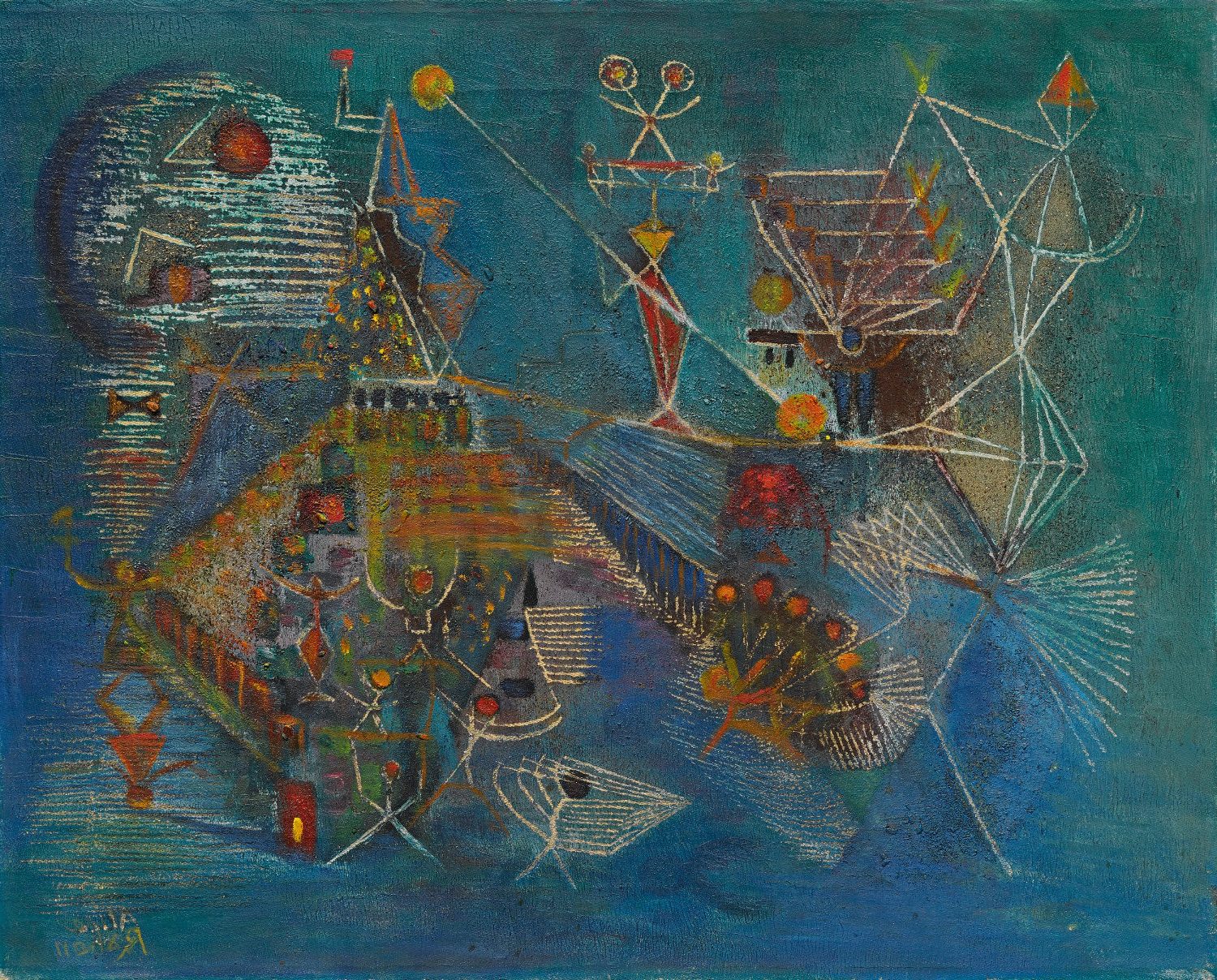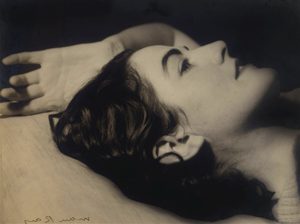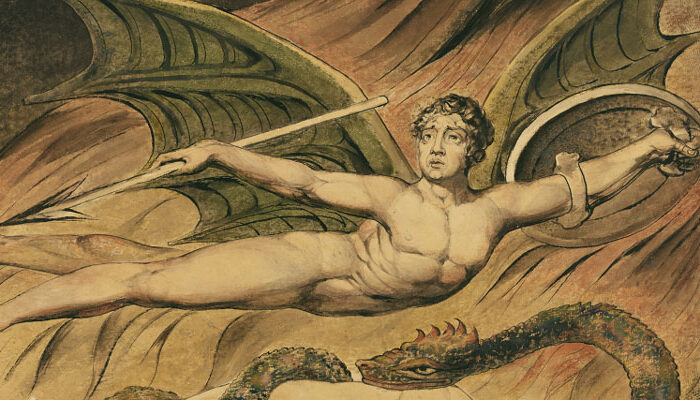Alice Rahon Painter: Surrealist Pioneer of Mexican Modernism
Born: June 8, 1904 Chenecey-Buillon, France
Death: September 1987, Mexico City, Mexico
Art Movement: Surrealist
Nationality: French Mexican
Influenced by: Frida and Diego Rivera
Institution: École des Beaux-Arts in Paris
Alice Rahon Painter: Surrealist Pioneer of Mexican Modernism
Early Life and Influences
Alice Rahon is a French artist born in 1904. She started out as a poet, but became a painter later. Her work combines old and new concepts.
Artistic Beginnings and Meeting with the Surrealists
Alice Rahon began writing poetry in Paris. There, she met André Breton, the leader of the Surrealists. Breton welcomed her in the group because he liked her poetry.

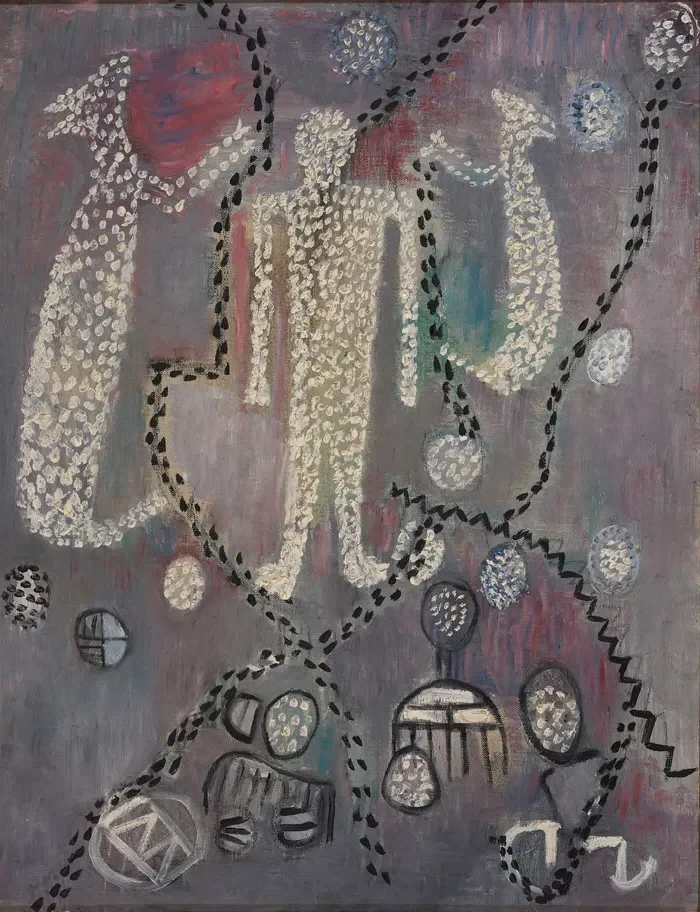
Rahon’s early works had bizarre images. The images were reminiscent of Surrealism. Before turning to art, she wrote three poetry books.
Rahon began to paint in the 1930s. She incorporated some Surrealist elements into her work. She also developed her own style.
Relationships with Notable Artists
Rahon and Wolfgang Paalen, another artist, were married in 1934. They met many famous people while traveling together.
Rahon made friends with Frida and Diego Rivera in Mexico. These artists were the inspiration for her art.
She saw the ancient art of Mexico and got inspired to incorporate it into her paintings.
Rahon’s friends helped her to grow as an artist. She used a variety of styles.
Artistic Evolution and Notable Works
Alice Rahon’s artistic journey encompassed poetry, painting and sculpture. Her unique style blended European Surrealism with Mexican cultural influences to form her unique artistic style.
Surrealist Exploration and Collaboration
Rahon began as a Surrealist poet in Paris. In 1936, she published “A meme la terre,” her poetry collection. Andre Breton then invited Rahon into his Surrealist group due to her talent.

La Ciudad Luminosa (The Luminous City) by Alice Rahon
Rahon quickly transitioned from music to visual arts when she arrived in Mexico, becoming acquainted with artists such as Frida Kahlo and Diego Rivera who became key influences on her interest in Mexican folk arts and pre-Columbian culture.
Rahon’s works combine dreamlike imagery and symbols from ancient cultures into paintings with vibrant colors and textures.
Signature Techniques and Artistic Contributions
Rahon developed a unique painting style. She created textures by scratching wet paint. Her work took on a primitive, raw feel with this method.
Her paintings are often filled with abstract forms and magical beings. She was inspired by Mexican folk art and cave paintings. Rahon created dreamlike scenes using symbols and vibrant colors.
Her notable works include “Noir Animal”, “The Ballad of Frida Kahlo”, and others. These pieces are a blend of Surrealism with Mexican influences.
Prominent Exhibitions and Museums
Rahon’s art has been recognized in Mexico and internationally. She had solo shows at the Palacio de Bellas Artes in Mexico City. Her paintings were also exhibited at the Museo de Arte Moderno.
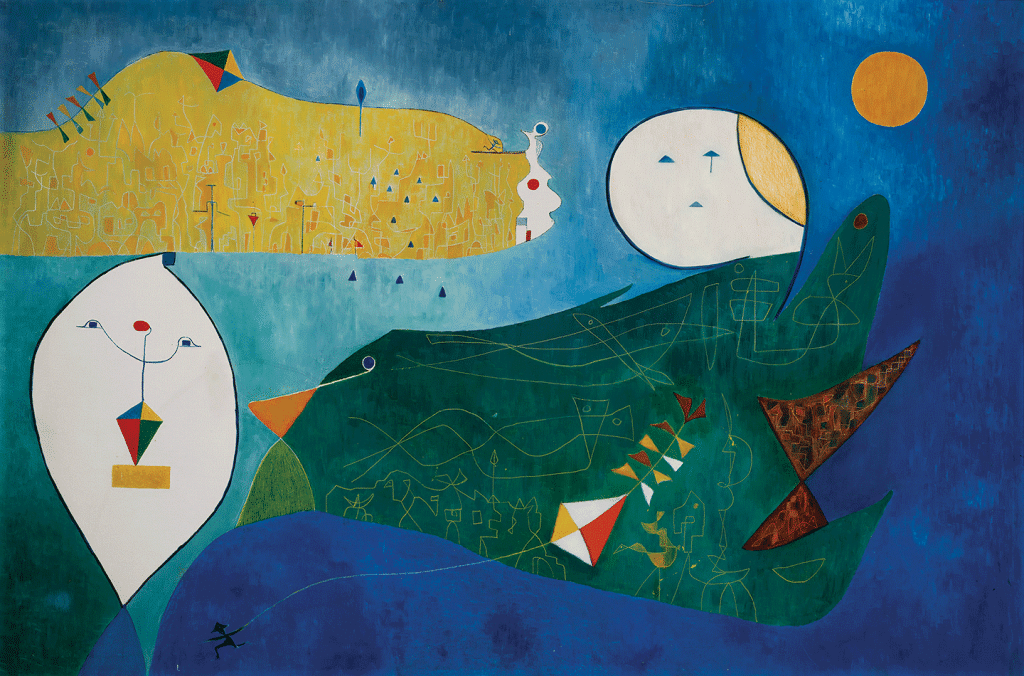
Madame Dimanche (circa 1955) by Alice Rahon
Her art was also displayed in several major museums in the United States. Her work was displayed at the Art Institute of Chicago, and San Francisco Museum of Modern Art. Rahon was included in the “In Wonderland”, an exhibition of Surrealist women artists, at the Los Angeles County Museum of Art.
Rahon’s works can be found today in top museums. Some of her works are held by the Metropolitan Museum of Art, New York. Her work is studied and appreciated worldwide.
Legacy and Impact
Alice Rahon has left a permanent mark on Mexican Art. She helped to shape Mexican Modernism and became a Mexican. Her work blended Surrealism and local influences.
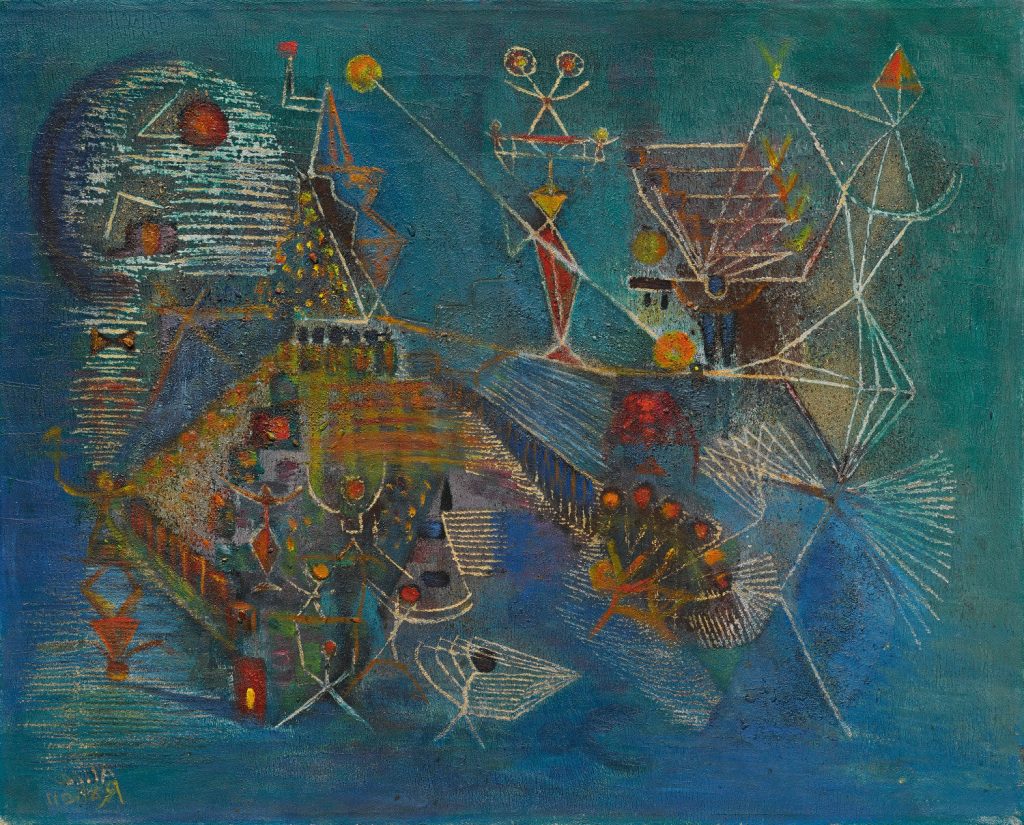
Le Cirque (1945) by Alice Rahon
Rahon’s artwork was inspired by the rich culture of Mexico. She was inspired both by Indigenous art as well as prehistoric cave painting. Her work was made more interesting by the mix of ancient and modern.
Rahon was a prolific Mexican artist who had many exhibitions in Mexico and in the U.S. Her work often explore themes of reflection and memory. Her unique style expanded Surrealism outside of its European roots.
Alice Rahon Archive preserves her legacy today. It contains her personal items, such as poems and paintings. This collection is a great way to introduce new generations to her work.
Rahon’s experience in Tepoztlán, Mexico influenced her work. Her paintings reflected the mystical atmosphere of Tepoztlán. Her impact on art history is due to this blend of cultures.
Frequently Asked Questions
Alice Rahon’s art sparked interest in her themes, influences, and style. Her unique position in the Surrealist Movement and her critical reception attracted interest.
What are the most notable themes in Alice Rahon’s artwork?
Alice Rahon’s art often incorporates symbols and textures of ancient cultures. She loved to paint magical and mythical scenes. Rahon was inspired both by Native American art and cave paintings.
Her paintings blended old and new ideas. In her paintings, she explored themes such as nature, dreams and spirituality.
How did Alice Rahon’s style evolve throughout her career?
Rahon began as a poem , before she became a painter. Her earlier paintings were abstract. Her style evolved as she developed as an artist.
She started to incorporate sand and other natural materials into her paintings. Her work was given a distinctive texture. In her later work, she combined painting and sculpture in innovative ways.
What was Alice Rahon’s relationship with the Surrealist movement?
Rahon was a member of the Surrealists in Paris. Andre Breton was a major Surrealist. She shared with the Surrealists an interest in dreams and unconscious minds.
Her move to Mexico changed the way she created art. She retained some Surrealist concepts but developed her own unique style. Rahon’s art became a bridge that connected European Surrealism with Mexican art.
Can you discuss the influence of Wolfgang Paalen on Alice Rahon’s work?
Rahon was married to Wolfgang Paalen for a while. He was an artist as well. They shared their ideas about art and traveled together.
Paalen taught Rahon new painting techniques. Both of their styles were influenced by their time in Mexico. Rahon’s art still shows Paalen influence, even after the two split.
What is the significance of self-portraiture in Alice Rahon’s body of work?
Rahon’s art was not primarily about self-portraits. Her work was more about feelings and ideas than showing herself. She painted scenes that she imagined.
Rahon often included herself in her art in a symbolical way. Instead of using realistic portraits, she might choose to use objects or animal figures.
How has Alice Rahon’s work been received by critics and art historians?
Rahon was a major artist in the Mexican abstract art movement, according to critics. Art experts were drawn to her unique style. Others praised her for mixing different cultural influences.
Rahon’s art has recently attracted renewed interest. Art historians study her role in bringing Surrealism and Mexican art together. Her works are now considered key pieces of 20th century art history.

